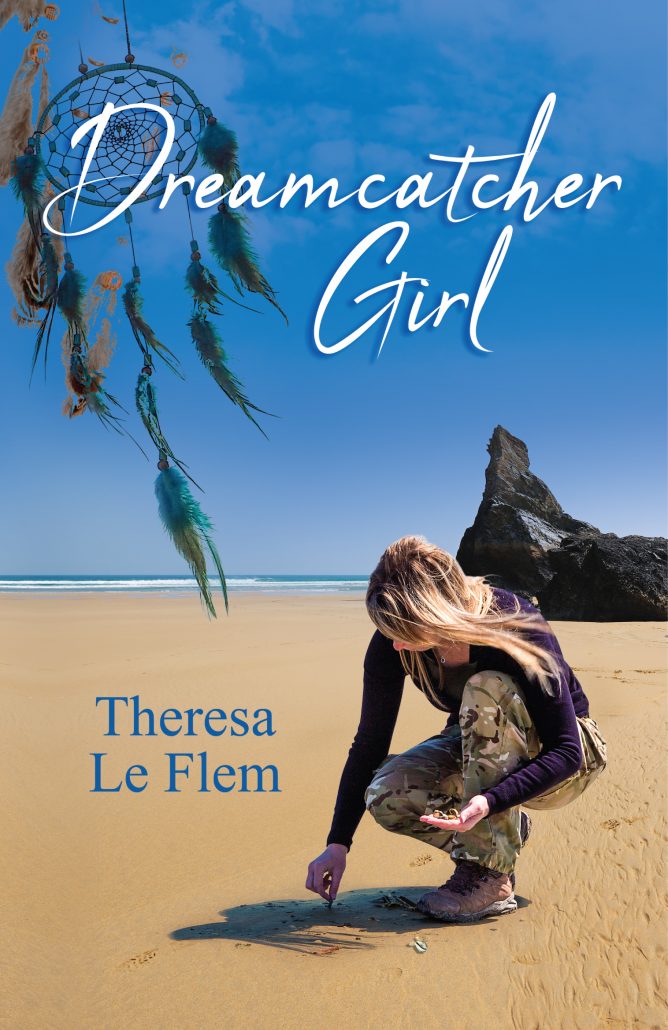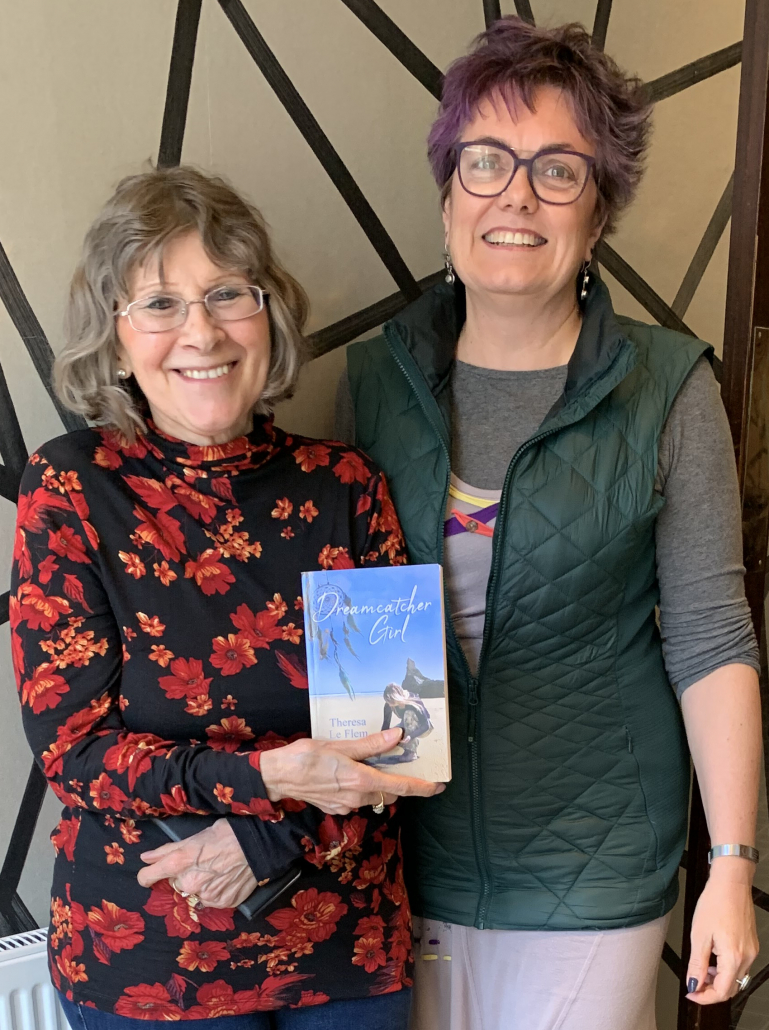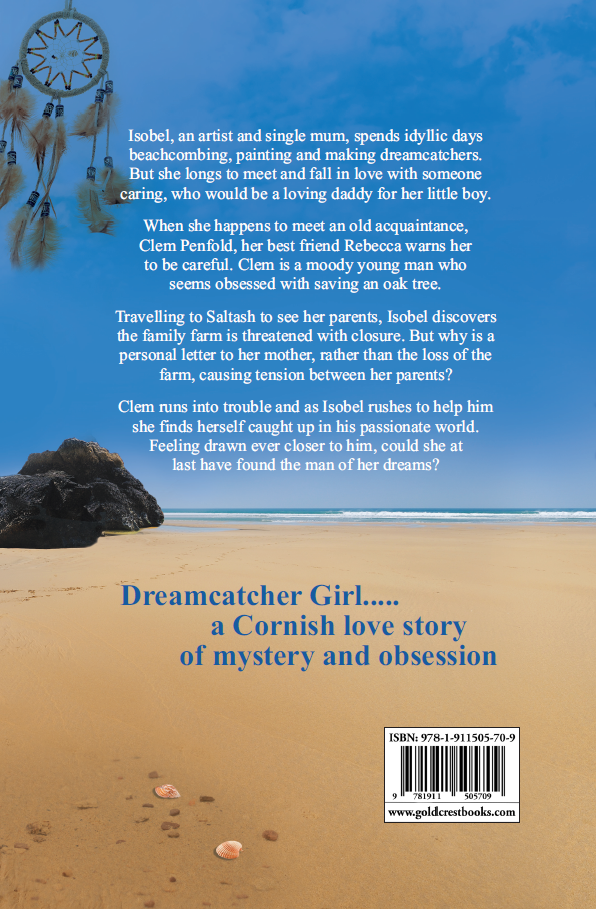A romantic novel for the month of romance
I was delighted to publish Theresa Le Flem’s latest romantic novel, Dreamcatcher Girl, recently particularly as I had enjoyed her other books some much.
I caught up with Theresa recently and asked her about her romantic novel and how she came to write it.
What first gave you the idea to write Dreamcatcher Girl?
The initial idea haunted me for ages, even years and throughout that time Isobel, the main character in Dreamcatcher Girl, didn’t come into it. The story I had in my head was of a teenage boy being killed falling from a tree. Ten years later, Clem, his twin brother, had failed to recover from the loss and the tree itself was haunted by the tragedy. The oak tree had a presence, I felt, a voice even – though I didn’t want my novel to get too weird! Twins, and the unique perception often experienced between twins generally, has fascinated me for a long time.
The story about the girl called Isobel was a separate idea originally, one I had on the backburner. Isobel was an artist in Cornwall, on the rebound from an abusive relationship. With her little boy, Tom, she spent her time painting and making crafts to sell. But no-one else had appeared in the story to move it along. I kept tossing these two ideas around for quite a while before I realised Isobel and Clem were both part of the same story!
My father was an artist and when I was young it was his desire to join the artists’ community in St. Ives, Cornwall, which attracted him to this rather bohemian life. So we moved to Cornwall as a family, and went to live in a tiny fisherman’s cottage. I was one of four girls and had just left school. My first job was in a studio pottery. There is a lot of Isobel in me; just like Isobel, I was making my own pottery, jewellery and candles to sell – as she does. I too tried to make a living out of selling my crafts in gift shops and craft fairs, but I never made enough money.
Do the themes in this novel arise from your own experiences?
Some of them, yes. I don’t know why but the subject of adoption and tracing one’s family history keeps creeping back into my work, yet I don’t have any history of this in my past. While the concept of the tree and the twins was still ticking over, however, I was ill for a few weeks. I ended up watching Long Lost Family on TV. (I don’t often watch daytime television usually!) but I found this programme very moving. The experience of being reunited with a ‘stranger’ who is actually your own child came home to me. Again, similar to the bonding between twins, there is that connection which is hard to define. Isobel discovered that her mother had become pregnant as a teenage girl during the Second World War. Single mothers were definitely frowned upon in those days and she had been forced to give up her illegitimate baby for adoption but had never told anyone.
My novels grow organically: I pick up bits, influences, dreams, and my own life’s legacies and weave them in. Writing for me is a slow process in which I become very engrossed. I don’t find it easy to talk about it, especially when I’m still in the middle of writing a novel. To talk about it seems almost like a betrayal, like giving away someone’s personal information. It’s almost like watching a film as I don’t know where the next scene will be or what will happen next. I don’t even know who the characters are until they ‘speak’ to me.
The subtitle says it is a love story of mystery and obsession. Does that mean it isn’t really a love story at all?
Following the accident, Clem’s obsession with the oak tree, and his failure to live up to the brilliant reputation his brother had, damaged his self-esteem. When he loses his job, and his relationship with his partner Jenny fails, it led me into exploring the state of depression due to anxiety, poverty and lack of confidence. My working title for the novel was originally called: The Tree Was His Brother. However, when Isobel came into the story, with her own relationship on the rocks, the two characters – in a mysterious way – balanced each other. Combining the abstract spirit of the dead twin, with rumours of Isobel’s half-brother – who she never knew existed – started to bring the novel into deep waters. I was struggling to find a way out, to be honest. Would love find a way to save them both from this downward spiral?
This is a complex, deep, and heavy story if you like – but just when I thought it wasn’t going to work, the idea of myth – and my own belief in true love – finally began to lift the story out of that oblivion.
Dreamcatchers, the simple combinations of string, beads, feathers and shells, have a history –a North American myth. They are believed to help you relax, their light feathers and sparkling beads are said to clear away all that dark stuff and help you sleep – help you forget. It’s not good for the soul to shut those hurtful memories out and be afraid of them returning; it’s far better to accept them, live for the moment and move on. So where does the story take Isobel and Clem? Best to read the book and find out!
If you haven’t discovered Theresa Le Flem’s writing yet then Dreamcatcher Girl is a good place to start.
You can buy it now on Amazon
The ebook is just 99p until February 18th





